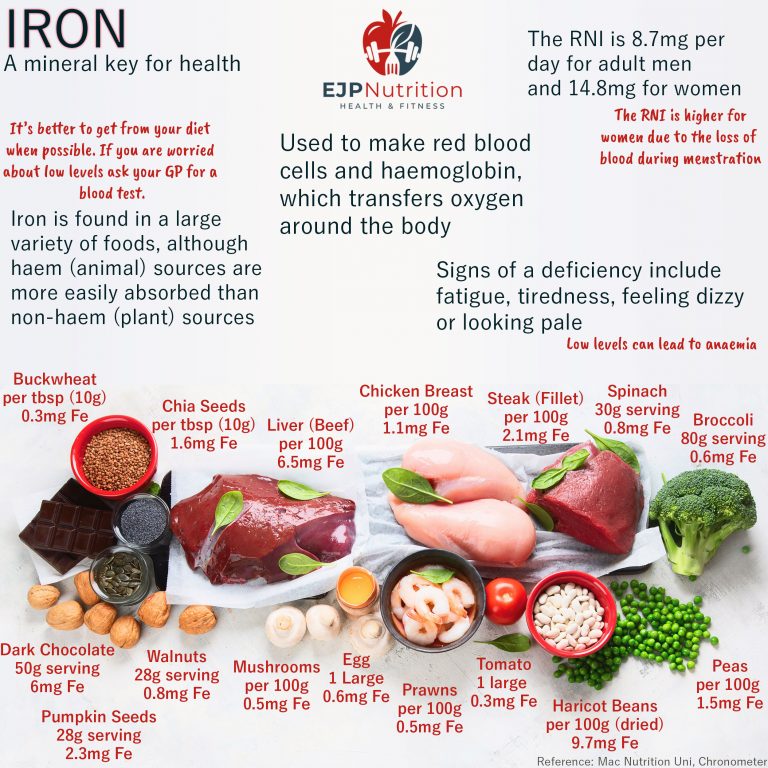Iron is an important mineral that is used to make red blood cells and haemoglobin. These transfer oxygen around the body. If you don’t have enough, signs of a deficiency include; fatigue, tiredness, dizziness and paleness. It can lead to anaemia. The RNI for adult males is 8.7mg per day, and for women is 14.8mg.
Where to get it
Red meat is still generally the best source of iron in our diets. This is partly due to the fact that animal sources (haem vs. non-haem) have a higher bioavailability and are more easily absorbed. Vitamin C increases the absorption of non-haem iron. So if you get more of your iron from plant sources it would be beneficial to combine the two in a meal.
In contrast calcium can interfere with the absorption, so try to separate those two when possible.
Another good source is liver. However pregnant women should avoid this as it’s also very high in vitamin A, which can be toxic to the baby. Pregnant women are susceptible to iron deficiencies as they have a higher requirement (in part for the blood supply to the foetus and placenta). A study in the UK found there was a positive relationship between total iron intake, from food and supplements, in early pregnancy and birthweight.
If considering a supplement, especially when pregnant, always consult with the healthcare professional looking after you first.
Too much or not enough?
Across the population while deficiencies are not uncommon, you can go too far the other way. From the NHS website they note; very high doses of iron can be fatal! (I added the exclamation point). Having too much iron can damage the heart, liver and endocrine organs. This again is why supplementation should only be taken with care. If you suspect a deficiency your GP can run a blood test and then advise if iron tablets are needed, and at what dose.
As usual this is another micronutrient you can get it from your diet, and that’s generally better. Eating a balanced diet, which includes a range of sources, including lots of plants, is where we come back to again.
References: Mac Nutrition Uni, Biochemistry, Iron Absorption – Ems et al. Alwan et al 2011
(Reposted from Instagram


